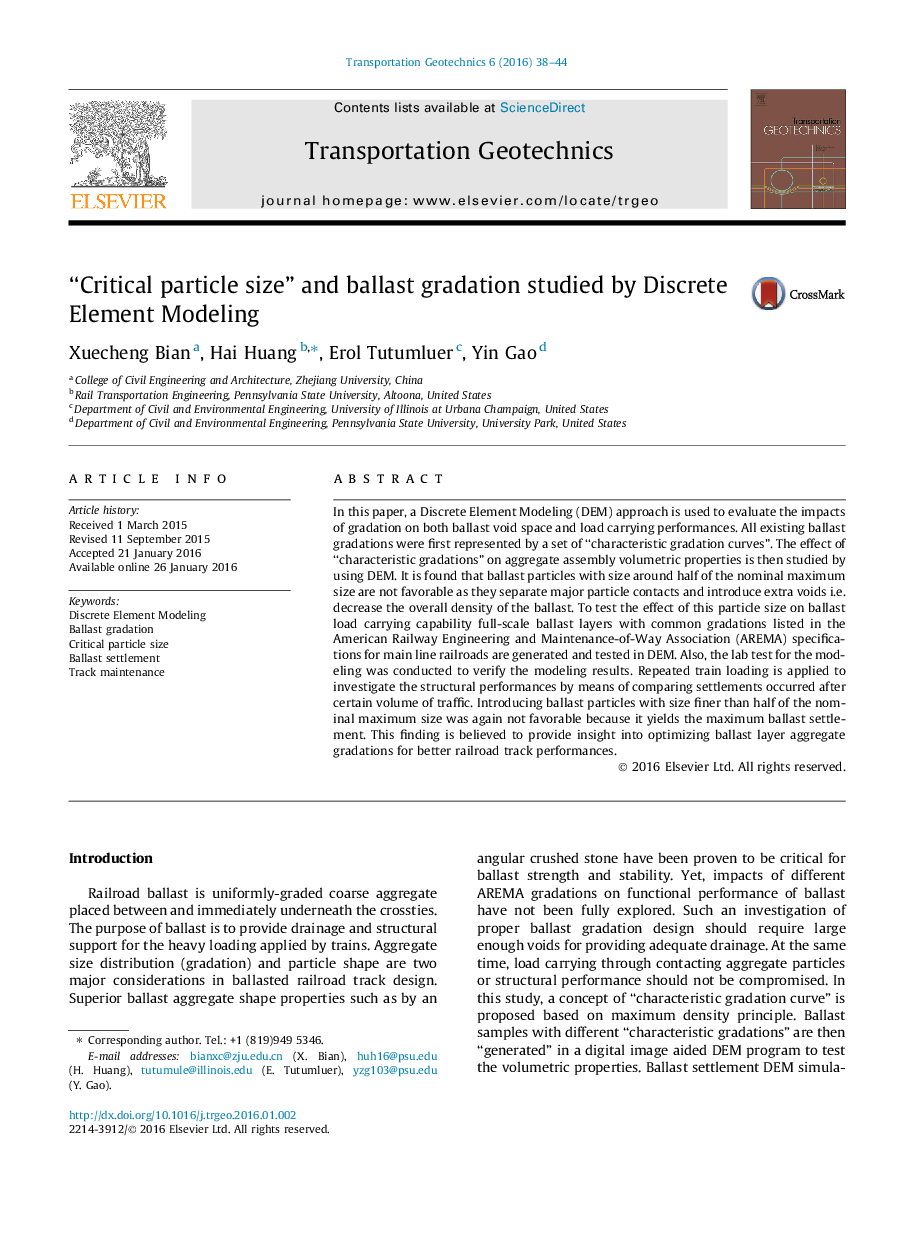| Article ID | Journal | Published Year | Pages | File Type |
|---|---|---|---|---|
| 310302 | Transportation Geotechnics | 2016 | 7 Pages |
In this paper, a Discrete Element Modeling (DEM) approach is used to evaluate the impacts of gradation on both ballast void space and load carrying performances. All existing ballast gradations were first represented by a set of “characteristic gradation curves”. The effect of “characteristic gradations” on aggregate assembly volumetric properties is then studied by using DEM. It is found that ballast particles with size around half of the nominal maximum size are not favorable as they separate major particle contacts and introduce extra voids i.e. decrease the overall density of the ballast. To test the effect of this particle size on ballast load carrying capability full-scale ballast layers with common gradations listed in the American Railway Engineering and Maintenance-of-Way Association (AREMA) specifications for main line railroads are generated and tested in DEM. Also, the lab test for the modeling was conducted to verify the modeling results. Repeated train loading is applied to investigate the structural performances by means of comparing settlements occurred after certain volume of traffic. Introducing ballast particles with size finer than half of the nominal maximum size was again not favorable because it yields the maximum ballast settlement. This finding is believed to provide insight into optimizing ballast layer aggregate gradations for better railroad track performances.
